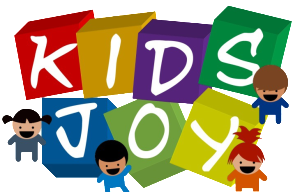As a parent, you’ve embarked on an awe-inspiring journey filled with cherished moments and delightful surprises. However, amidst the laughter and love, there comes a puzzle that tests the patience of even the most experienced parents – the enigmatic world of whining. Whether you’re exploring the toy store or navigating the morning routine, your preschooler’s whines can create a cacophony of emotions, leaving you seeking answers on how to respond effectively.
Imagine a bright and beautiful morning as you prepare to embrace the day with your preschooler. As you begin the morning routine, a familiar symphony of whines and grumbles fills the air. “I don’t want to get dressed!”they protest, tugging at their night clothes as if they were made of lead. The simple task of getting dressed suddenly becomes an uphill battle, and the clock is ticking relentlessly. As you move on to the next task of brushing their teeth, the whining continues. “I don’t like the toothpaste!” they claim, as if every toothpaste flavor on the planet is an affront to their taste buds. You feel the tension mounting, and it seems like every little step in the morning routine elicits a whining chorus from your little one.
Does this sound all too familiar? If so, take comfort in knowing that you’re not alone. The Morning Routine Woes are just one instance of the many scenarios where preschoolers resort to whining to express their emotions, needs, or frustrations. It’s essential to understand that whining is a natural part of their development, especially during their preschool years.
Why Do Preschoolers Whine?
Whining is your child’s way of communicating when they lack the verbal skills to express themselves fully. Some common reasons for preschoolers’ whining include:
- Seeking Attention: Whining can be an attempt to gain your attention, especially when they feel ignored or overlooked.
- Expressing Frustration: When faced with challenges or tasks they find difficult, preschoolers may whine to communicate their frustration.
- Asserting Independence: As your child yearns for independence, they may resort to whining to assert their preferences and desires.
- Seeking Comfort: Whining can be a way for preschoolers to seek comfort when they feel anxious or uncertain.
- Modeling Behavior: Children often observe adults or older siblings using whining as a means of communication and may imitate it.
Strategies to Respond to Whining
- Stay Calm and Empathetic: When confronted with whining, remain composed and empathetic. Acknowledge their feelings by saying, “I can see you’re feeling upset right now.”
- Teach and Encourage Communication: Help your child develop better communication skills by encouraging them to use words to express their needs or frustrations. Prompt them to say phrases like “I want,” “I feel,” or “I need.”
- Set Clear Boundaries: Establish consistent rules regarding whining and explain that it’s not an acceptable way to get what they want. Encourage them to ask politely instead.
- Identify Triggers: Observe your child to identify patterns in their whining. Are they more likely to whine when they are tired or hungry? Have they not had enough sleep in the night? Knowing the triggers can help you prevent or address the behavior before it escalates.
- Offer Choices: Empower your child by providing them with choices when appropriate. This can give them a sense of control and reduce frustration. For example, “Would you like to wear the red shirt or the blue shirt?”
- Use Positive Reinforcement: Praise your child when they use their words effectively and avoid whining. Positive reinforcement can be a powerful tool in shaping their behavior.
- Create a Calm-down Space: Set up a designated area where your child can go to calm down when they feel overwhelmed. Stock it with comforting items like books or soft toys.
Dealing with a whining preschooler can be challenging, but remember that it’s a natural part of their communication development. By understanding the reasons behind their whining and responding with patience, empathy, and effective strategies, you can help your child navigate their emotions more effectively.


Recent Comments